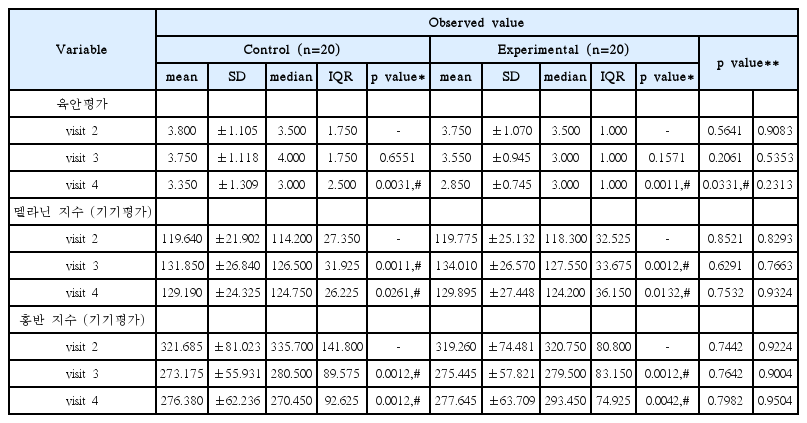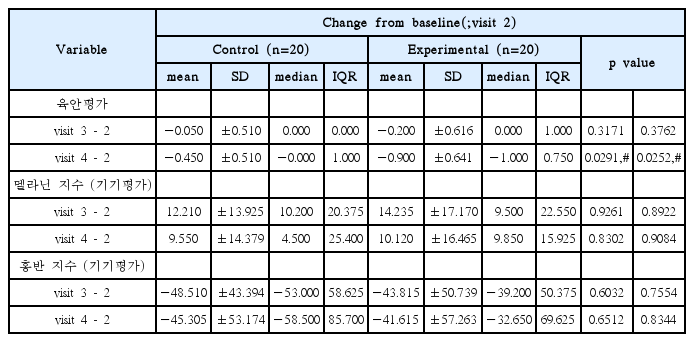A Clinical Research about Herbal Cosmetics Containing Caffeic acid phenethyl ester Isolated from Vespae Nidus on the Whitening Effects
Article information
Abstract
Objectives
The purpose of this clinical research was to investigate the effects of herbal cosmetics containing Caffeic acid phenethyl ester (CAPE), an ingredient compound of various herbs including Vespae Nidus, on the Whitening Effects.
Methods
A total of 20 subjects who visited Pusan National University Hospital from March 2nd, 2017 to April 11th, 2017 were included. In this study, we evaluated the visual evaluation, the melanin index (M) and erythema index (E) through skin analysis equipment, the subjective whitening improvement analysis, and the adverse reaction according to product use. Statistical analysis was performed with independent t-test and Mann-Whitney’s U test. Statistical significance was achieved if the probability was less than 5% (p<0.05)
Results
As a result of the visual evaluation, it was effective in improving skin whitening. The subjective whitening improvement analysis also showed positive results. However, no statistically significant differences were found between the test and control cosmetics in the melanin index (M) and erythema index (E) through skin analysis equipment. In the safety evaluation, some adverse reactions were reported, but no significant were observed directly from cosmetics.
Conclusions
Considering the above results, we have confirmed the possibility of herbal cosmetics containing containing CAPE of Vespae Nidus Extracts.




